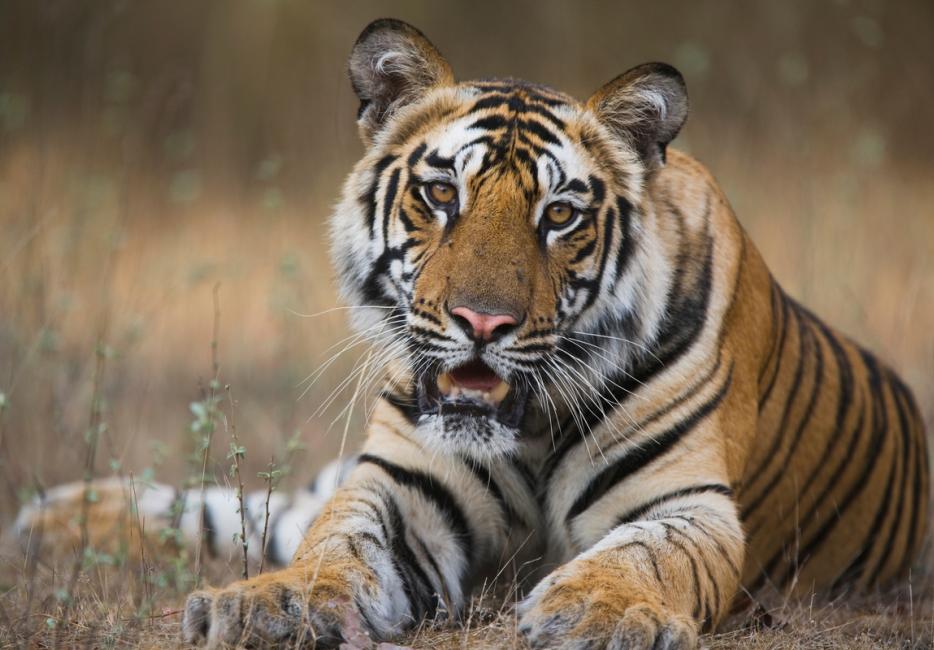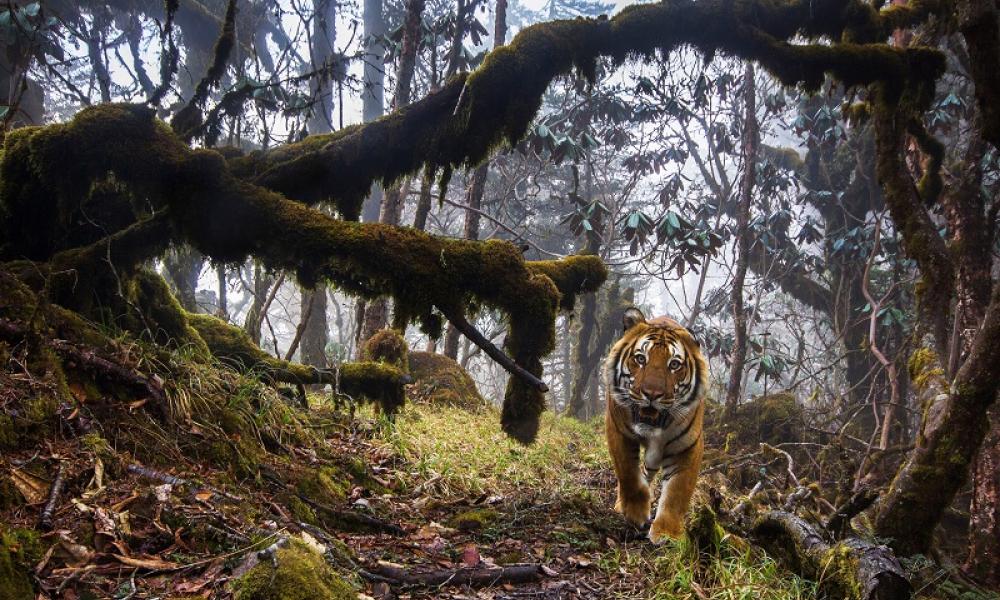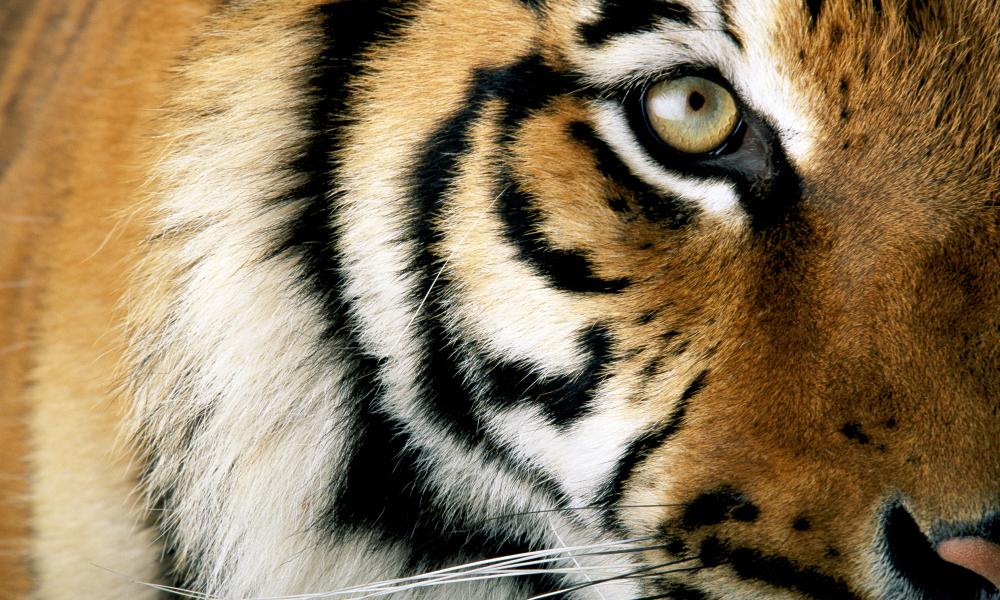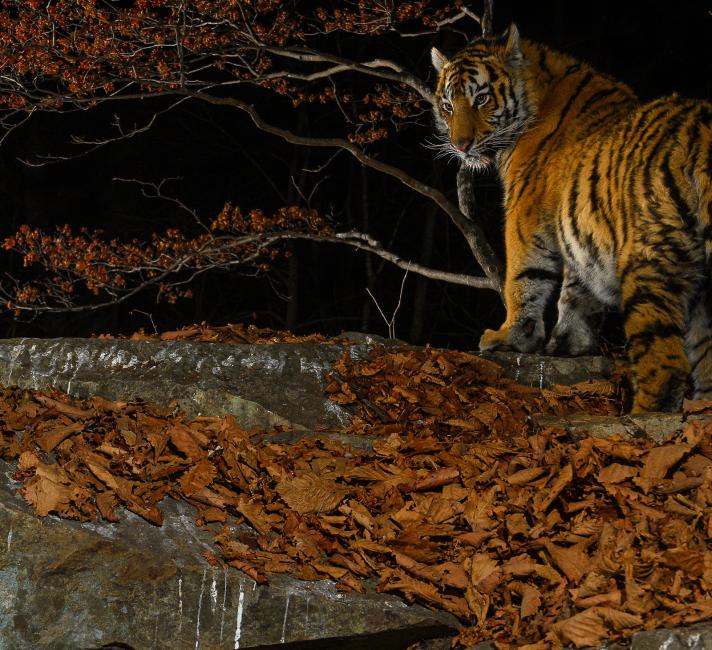
Tigers: possibly the world's most iconic big cat species:
Affected by: Illegal wildlife trade , Human wildlife conflict , Habitat loss and fragmentation , Climate change
The beautiful, awe-inspiring tiger is one of our world’s most iconic animals. But here’s the shocking truth. Wild tiger numbers dropped by around 95% since the beginning of the 20th century. Now, for the first time in conservation history, their numbers are on the increase.
Since 2010, we have been working to help secure a viable future for wild tigers. In recent years, with crucial support from local communities and commitment from various governments, the decline in global tiger numbers has halted. But there’s a lot more work to do.
We’re working closely with governments and community groups across Asia – and your support is crucial, as always. Today, over 80% of wild tigers live in WWF supported landscapes. Will you join us, and help protect this amazing wild cat?

Where do tigers live?
Tigers can live in a wide variety of natural habitats, from forested habitats, grasslands and mangrove swamps to harsh, snowy forests of the Russian Far East. The tiger is the biggest species of cat on the planet. In Northeast Asia, they tend to be larger with longer hair, while tigers on the island of Sumatra, Indonesia, tend to be smaller and are found in tropical rainforests.
India is home to more wild tigers than any other country, from the Terai Arc Landscape in the north to the Western Ghats in the south. Although, in mainland southeast Asia, their numbers are in decline and they are believed to be extinct in Cambodia, Lao People's Democratic Republic and Vietnam.
A recent WWF report outlines incredible opportunities for boosting nature recovery by expanding wild tigers’ range. While current tiger range has shrunk by around 95% over the past hundred years, there is potential to more than double its current size. Many of these recovery areas serve as critical carbon sinks. Protecting these important landscapes for tiger recovery would not only help contribute to global climate change mitigation goals but would also generate significant ecological benefits to people, wildlife and the planet.

Why tigers are so important
As top predators and ‘umbrella species’, tigers help to keep their environment healthy.
It’s the way things naturally work in the wild – the predators prey on other animals, in this case herbivores (plant eaters) such as deer. But without enough tigers to eat them, herbivores can overgraze and damage the land, disrupting the balance of the local environment.
Local people also depend on a healthy environment for food, water and lots of other resources. By helping protect tigers we’re also helping look after the places where they live, which is good for all the people and wildlife sharing that environment.
Tigers and climate change
Climate change poses a growing threat to us all – tigers included.
Rising sea levels are threatening critical tiger habitat. Warming temperatures affect distribution of tree species which can impact tiger prey species, and there is an increased danger to tigers and tiger habitat of extreme weather events, like flooding or forest fires.
In addition, habitat changes due to climate change can bring tigers closer to human communities, leading to increased conflict and suffering for both humans and tigers.




 Global Tiger Day 2024
Global Tiger Day 2024
 Top 10 facts about Tigers
Top 10 facts about Tigers
 Tigers roar back in Nepal
Tigers roar back in Nepal
 Restoring the Tiger’s Amur Heilong Home
Restoring the Tiger’s Amur Heilong Home